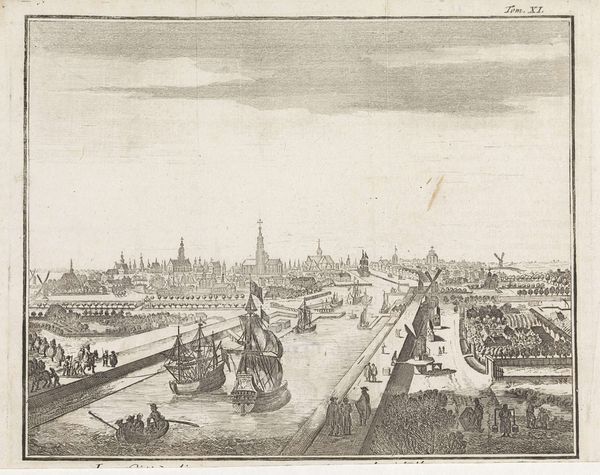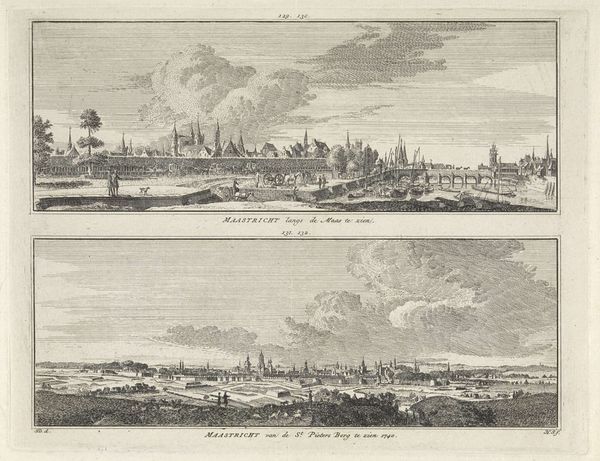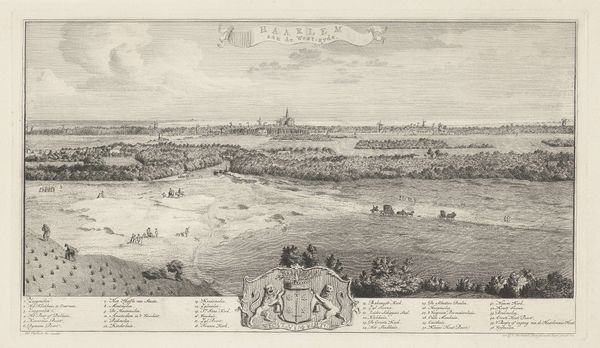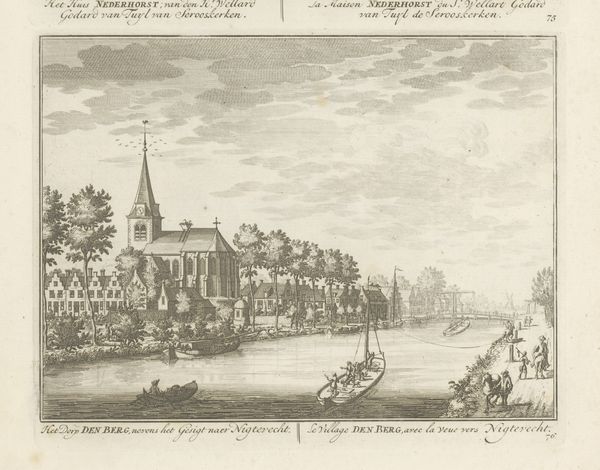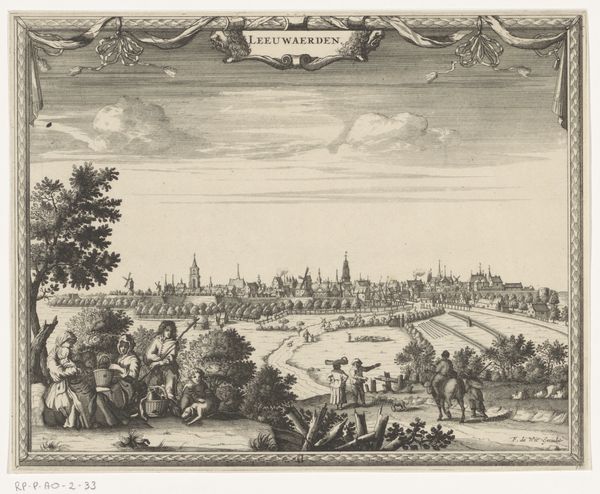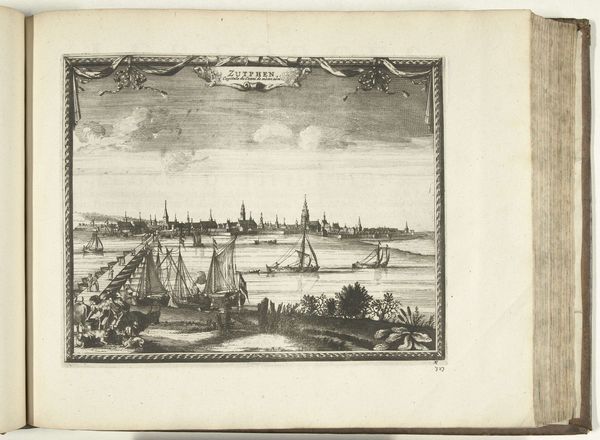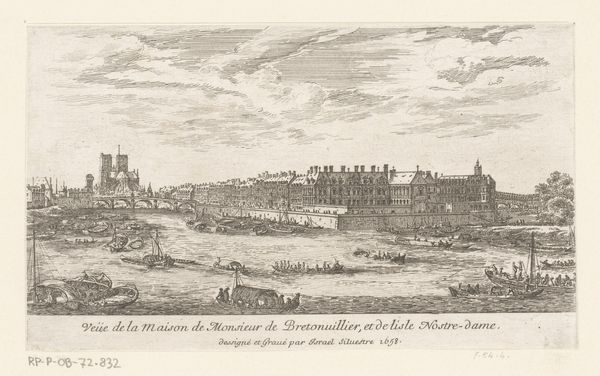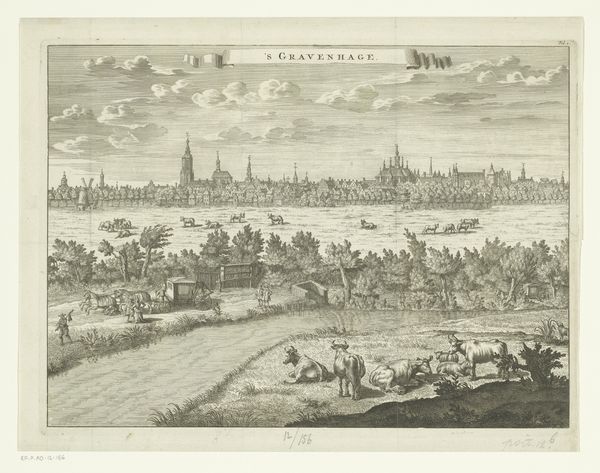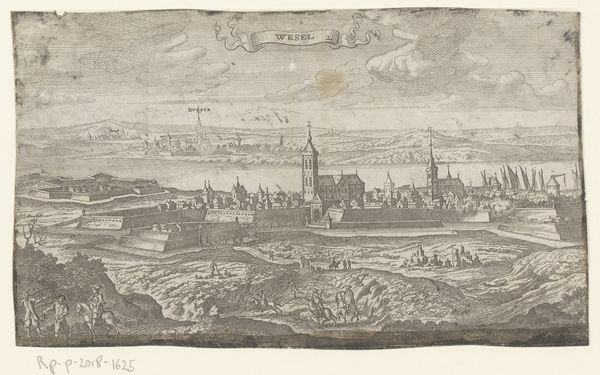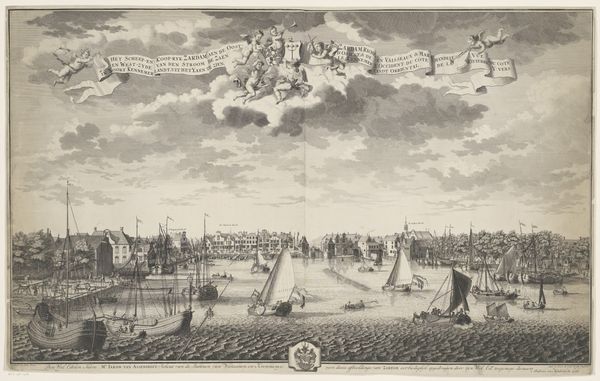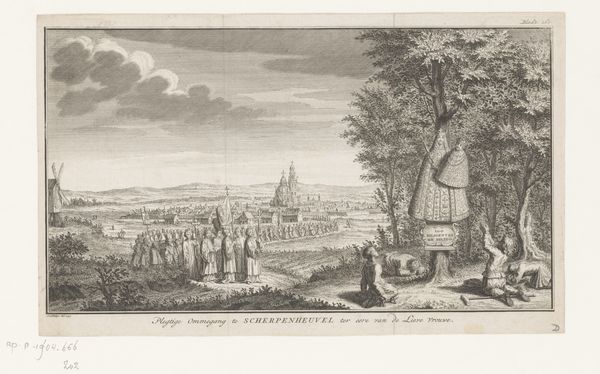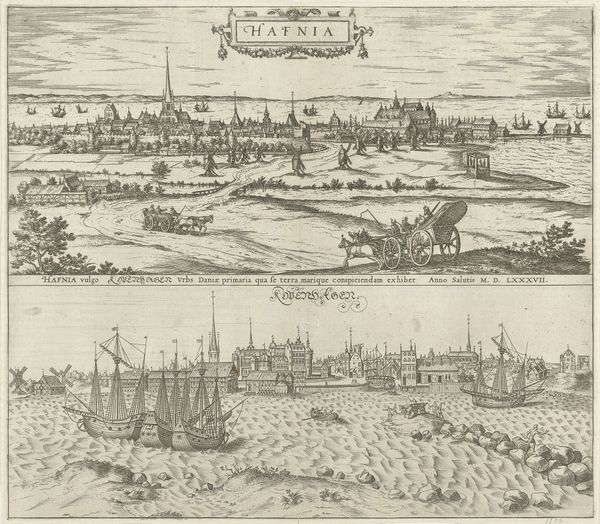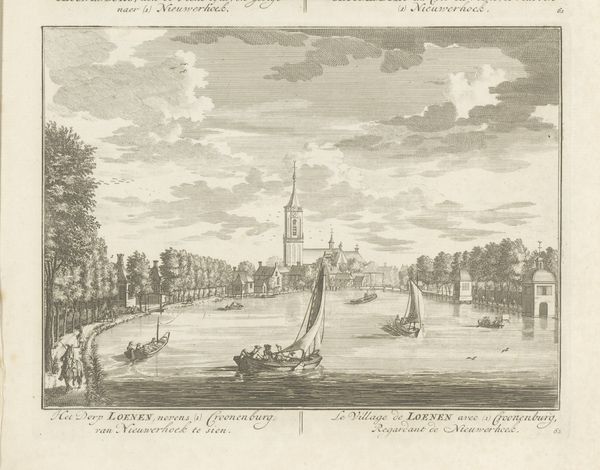
print, engraving
#
aged paper
#
dutch-golden-age
# print
#
old engraving style
#
landscape
#
cityscape
#
engraving
Dimensions: height 161 mm, width 203 mm
Copyright: Rijks Museum: Open Domain
Daniël Stopendaal created this view of Muiderslot Castle and Muiden using etching techniques sometime around the turn of the 18th century. Etching is a printmaking process that relies on acid to bite into a metal plate, in this case most likely copper, to create an image. The artist covers the plate with a waxy, acid-resistant ground, then draws through the ground with a sharp needle, exposing the metal. The plate is then immersed in acid, which etches the lines into the metal where it's exposed. The depth of the lines determines how much ink they hold, influencing the darkness of the printed line. Here, Stopendaal used etching to capture the serene landscape, and the effect is linear, precise, and reproducible. This was important in the Netherlands, a place where prints functioned as a crucial technology of information sharing. The technique allowed for the wide dissemination of images, contributing to a shared visual culture that supported Dutch commerce and national identity. It is a reminder that even seemingly straightforward images are born of considered and specialized processes, reflecting wider patterns of labor, technology and society.
Comments
No comments
Be the first to comment and join the conversation on the ultimate creative platform.
